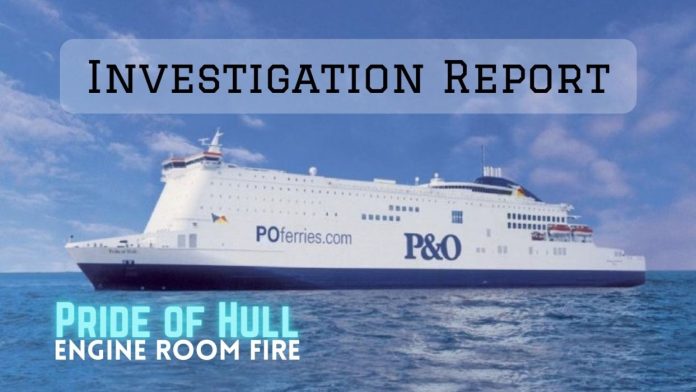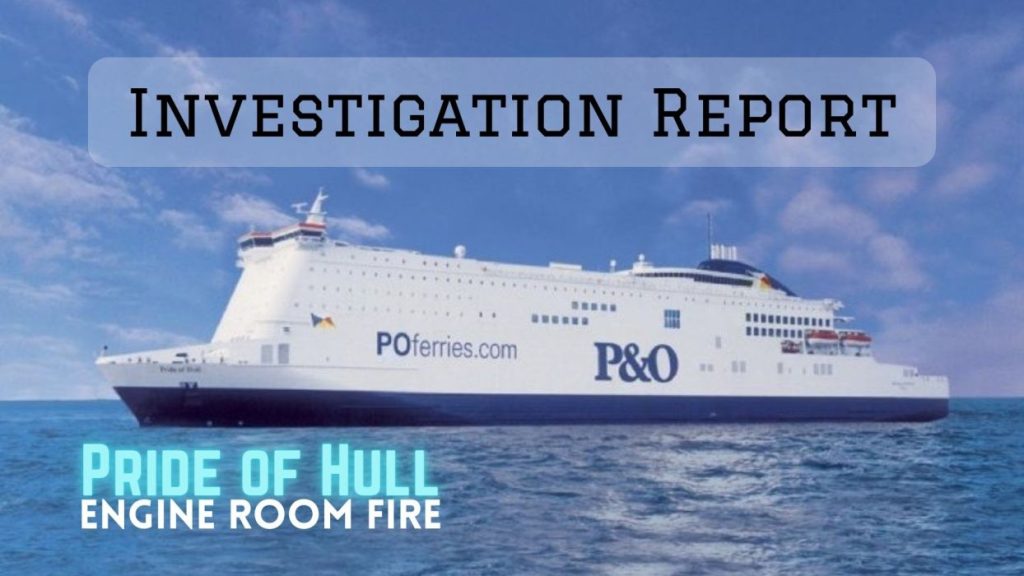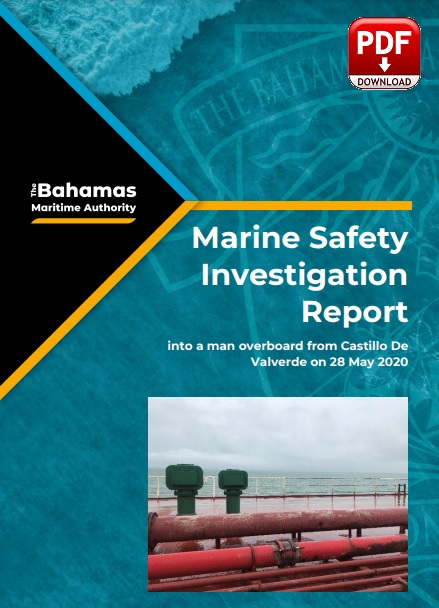
(www.MaritimeCyprus.com) The fire broke out in the engine room as the ferry sailed from Hull to Rotterdam on 20 October 2020, carrying 264 passengers and crew. The BMA has published a marine safety investigation report.
What happened
On 20 October 2020, the ro-ro passenger ferry Pride of Hull was outbound in the Humber
Estuary, UK, when a fire was detected in the vicinity of the thermal oil circulation pumps,
part of the vessel’s heat reclamation and transfer system. Shortly afterwards, the vessel
lost electrical power and propulsion but used the remaining headway to anchor safely.
The vessel’s Hi-Fog fire suppression system activated automatically but did not operate
as anticipated and could not control the fire, which was extinguished using the vessel’s
fixed CO2 system. The vessel returned to port, under its own power, the next day.
No one was hurt, damage was limited and there was no pollution.
Why it happened
Examination of the thermal oil circulation pump identified that progressive bearing
failures resulted in extreme frictional heating, generating temperatures in the order of
1,200°C, far in excess of the auto-ignition temperature of the thermal oil used in the
system.
Assessment of the fire suppression system identified that the system’s effectiveness
was compromised by pump output when multiple zones were activated and its
dependence on a domestic freshwater pump to maintain supply for longer than two
minutes. Additionally, the system’s pumps were not connected to the emergency
switchboard and therefore stopped when the vessel lost electrical power. These
limitations were compliant with requirements but were not reflected in emergency
response guidance.

Lessons Learned:
- Frequent failure of equipment generally indicates a weakness in the system. Identification of causal factors can facilitate a discussion with the equipment’s manufacturers to identify effective remedial actions.
- Any engineering change or modification of equipment should be preceded by an impact of change assessment to ensure the modification does not have unwanted impact on the operation of the equipment or associated systems.
- Fire suppression systems installed in machinery spaces before 2010 may not be as effective as those installed later. Operators should check that the system design meets their requirements and ensure that contingency plans reflect any limitations of the system.
- Fire suppression systems that are not connected to the emergency power supply do not work when the vessel loses mains power. Water mist systems do not work if their water supply is compromised. If the system is dependent on separate feed pumps, these should be connected to the emergency switchboard and activated automatically.
- Thermal imaging cameras are an excellent tool for identifying the seat of a fire, especially in reduced visibility.
- Re-entry into a space after CO2 flooding carries a risk. CO2 has a limited cooling effect on temperatures at the seat of a fire and does not remove fuel. Entering the space too soon may allow entry of oxygen and can cause the fire to reignite.
You can download the investigation report below:
Source: BMA
Read More on Ship's Fire and Fire Safety:
More Maritime Investigations on ship Fires
Maritime risk Focus: Engine Room Fires
Risk of fires on Ro-Ro ships (guidance)














